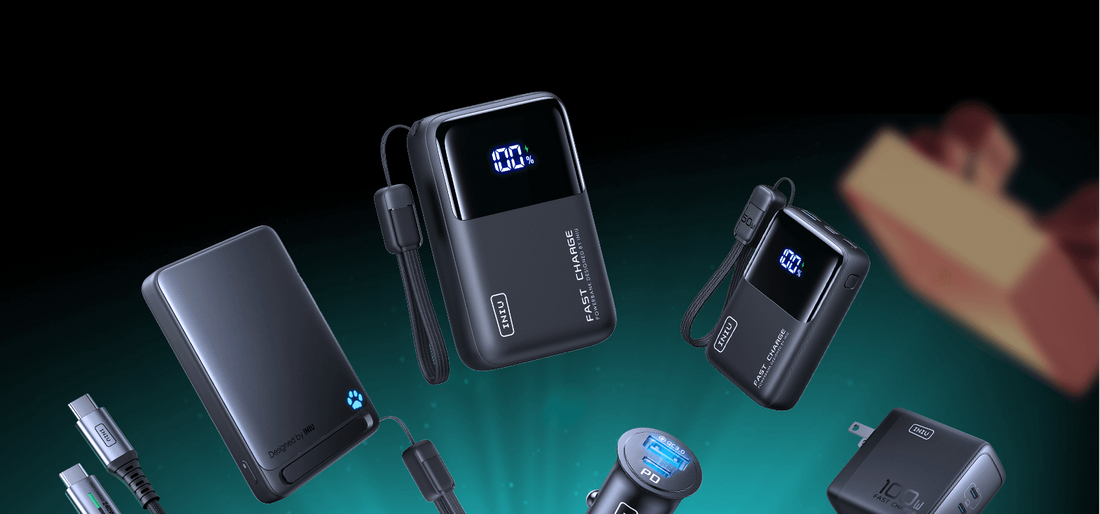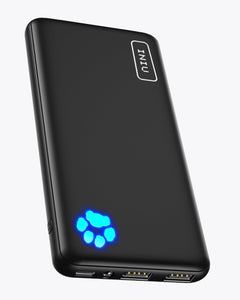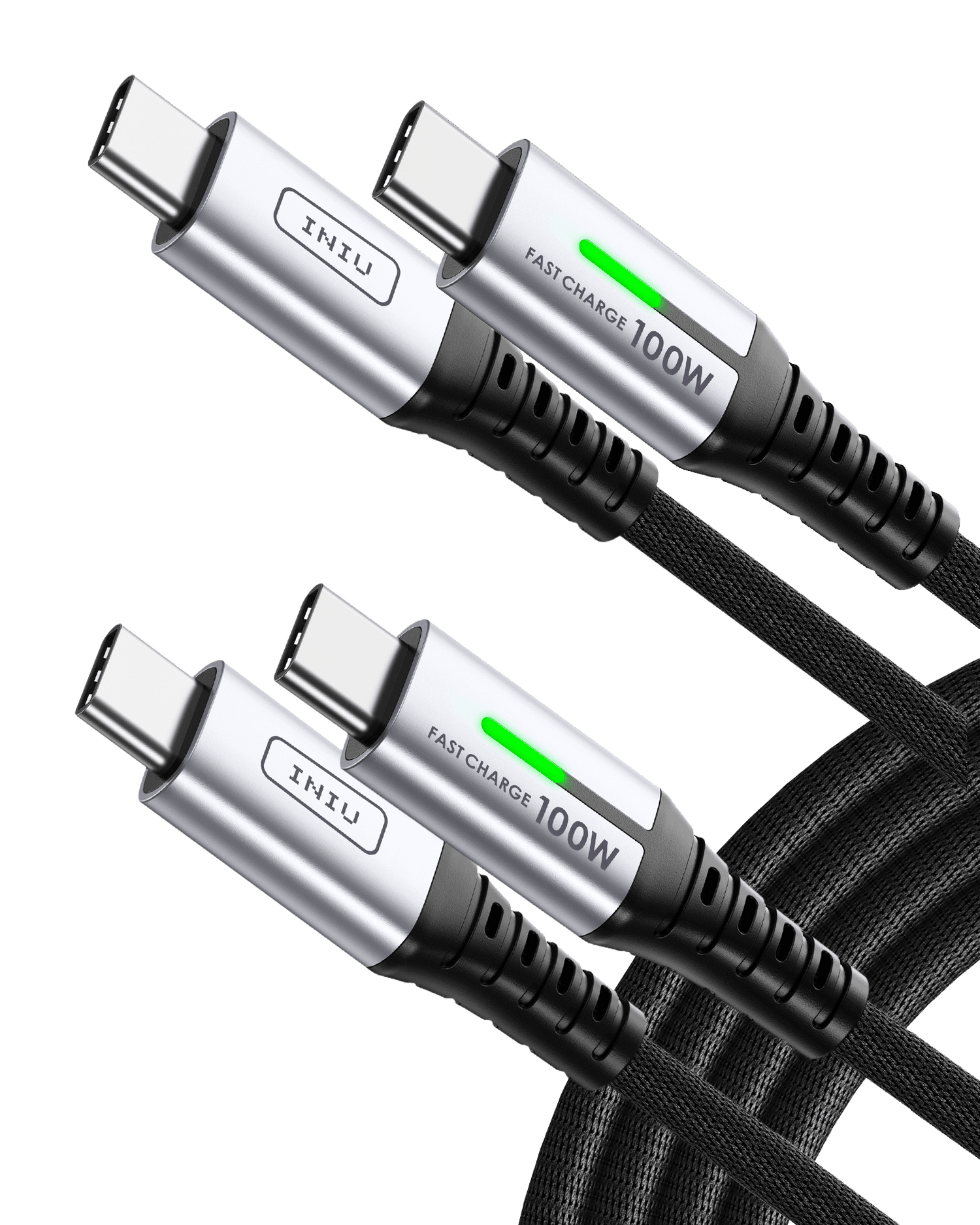
What Is a Power Bank and How Does It Work?
Your phone is dying. No outlet nearby. You're traveling, outside, or just far from a charger. That's when a power bank becomes your best friend. It fits in your bag. It brings your phone back to life. You don't have to search for a wall socket. You just plug in and keep going.
What Is a Power Bank?
A power bank is a small battery you can carry with you. It stores electrical energy. You can use that energy later to charge your phone, tablet, or other small gadgets. Here's how it works in simple steps:
- Charge the power bank at home using a wall charger or USB port.
- The power bank Stores the Power in its internal battery.
- When your phone needs charging, connect it to the power bank with a cable.
- The power bank sends the power to your phone, just like a wall plug would.
Inside a power bank, there are battery cells and a small control board. The board manages input (when the power bank charges) and output (when it charges your device). Some power banks have one output port. Others have two or more so you can charge many things at once.
Why People Love Power Banks: 5 Reasons
You see people carry power banks for a reason. These small tools solve everyday problems. Let's look at why they're so useful.
● You Don't Need a Wall Plug. Imagine being on a bus, in a park, or on a plane. There are no outlets around. Your phone's battery is low. With a power bank, you can charge your phone anytime, anywhere.
● You Can Charge More Than One Device. Many power banks have more than one port. You can charge your phone and tablet together. Some even power cameras or handheld fans.
● You Stay Connected Longer. A portable mobile power bank helps you keep working or playing without interruption. No more dropped video calls. No more maps closing while you're finding your way.
● They Help in Emergencies. During power cuts or storms, power banks become very helpful. You can call for help, check updates, or use a flashlight app—because your phone has charge.
● Great for Travel and Outdoor Days. Whether you're hiking, flying, or just on a long day out, a portable power bank keeps your devices ready.
The Many Types of Power Banks
Not all power banks are the same. Let's break them down clearly. Each kind helps in a different way.
Standard Power Banks
These are the most common portable power banks. You can find them in stores, online, and in many people's bags. Most have one or two USB ports—either USB-A, USB-C, or both. They are mainly used for charging phones, wireless earbuds, smartwatches, and other small USB devices.
Size and Power:
They usually range from 5,000mAh to 10,000mAh. A 10,000mAh power bank can charge a typical smartphone 2 to 3 times.
Best Use:
These are perfect for daily use, commuting, or short trips. You can keep one in your pocket, backpack, or desk drawer.
Pros:
Lightweight and compact
Affordable
Easy to carry around
Enough for everyday devices
Cons:
May not charge larger devices like tablets more than once
Some models charge slower if they lack fast-charging support
High-Capacity Power Banks
These are built for people who need more power on the go. They hold more energy, so you can charge several devices or charge one device many times. Some even support laptop charging through USB-C.
Size and Power:
Most have 20,000mAh to 30,000mAh or even more. A 25,000mAh model can charge a smartphone up to 5–7 times, or charge a tablet 2–3 times.
Best Use:
Useful for camping, business travel, road trips, or remote work without easy access to outlets.
Pros:
Can power multiple devices
Can last for several days
Often supports charging for laptops or cameras
Cons:
Heavier and larger in size
Takes longer to recharge
Usually more expensive
Fast-Charging Power Banks
These portable mobile power banks are built to charge devices faster. They include smart charging technology like Quick Charge (QC) or Power Delivery (PD), which allows them to deliver higher wattage.
Features:
Support for 18W to 100W power output, depending on the model. Some models even support output above 100W, allowing them to charge high-power devices like laptops. Some can charge smartphones up to 50% in 30 minutes, if the phone also supports fast charging.
Best Use:
Best for users who need fast charging during the day—such as professionals, travelers, or students with limited time.
Pros:
Much faster than standard charging
Often includes both USB-A and USB-C ports
Great for modern phones, tablets, and even laptops
Cons:
You need the right cable and device that supports fast charging
More expensive than basic models
Wireless Power Banks
These power banks let you charge your device without using a cable. You simply place your phone on the flat surface of the power bank. Charging starts automatically through Qi wireless charging. Some models include magnetic alignment, which keeps the phone in the right spot.
How It Works:
Built-in wireless coils transfer power when a compatible device touches the surface. Most work best with phones that support Qi or MagSafe.
Best Use:
Ideal for people who don't want to deal with wires, or for charging on-the-go while holding the phone.
Pros:
No cables needed
Simple and clean setup
Great for newer phones with wireless charging—especially those supporting Qi2, which now enables 15W fast wireless charging, matching the speed of standard wired chargers
Cons:
Needs to be used with magnetic phone accessories to work well
Must place device correctly to charge
Wireless charging reduces overall power efficiency
Solar Power Banks
These power banks have small solar panels on one side. They can collect sunlight and slowly charge their internal battery. Most models also allow regular USB charging.
How It Works:
Sunlight hits the solar panel. The panel converts it to electricity, which is stored inside the power bank. Solar charging speed depends on light strength and panel size.
Best Use:
Best for hiking, camping, or emergency situations with no electricity nearby.
Pros:
Eco-friendly and renewable
Can recharge without electricity
Useful as backup outdoors
Cons:
Solar charging is very slow (can take 20–50 hours in sunlight)
Larger size and longer wait for full battery
Power Banks with Built-in Cables or Plugs
These models include cables and sometimes even wall plugs built into the device. You don't need to carry separate wires or adapters.
What's Included:
Some include USB-C, Lightning, or Micro-USB cables. Others have foldable wall plugs, so you can charge the power bank directly from a socket.
Best Use:
Ideal for people who always forget cables or want a simple charging solution in one piece.
Pros:
Very convenient for travel
No need to pack extras
Often includes multiple connectors for different devices
Cons:
Built-in cables are short
If a cable breaks, it can't be removed easily
Your Pocket-Sized Power Plan
A portable power bank is more than a tool. It's peace of mind in your pocket. Whether you use it for travel, work, or emergencies, it keeps you one step ahead. Pick the right type for your life, and stay powered wherever you go.
[4 colors] INIU B41 Market's Slimmest 10000mAh Power Bank,Compatible with iPhone 14 13 12 Pro Samsung S21 Google LG iPad Tablet, etc.
FAQs About Power Banks
Q1.What does mAh mean in a power bank?
mAh stands for milliampere-hour. It tells you how much energy the power bank can store. A higher number means more power. For example, a 10000 mAh power bank can usually charge a phone about 2–3 times.
Q2. Is a 20000 mAh power bank good for travel?
Yes. A 20000 mAh power bank is a smart choice for travel. It can charge your phone several times and even power a tablet or small laptop. Most 20000 mAh power banks are under 100 watt-hours (Wh), so they are allowed on planes if packed in your carry-on bag.
Q3. How long does it take to charge a power bank?
It depends on the size, the power bank itself, and the charger you use. A 10000 mAh power bank may take 3–5 hours with a good wall charger. A 20000 mAh one can take 6–10 hours or more. But some power banks support fast recharge. For example, the INIU P50-E1 can fully recharge in about 2 hours with a 20W fast charger. Charging from a computer USB port is much slower and not recommended for large power banks.
Q4. Can I use a power bank while it's charging?
Yes, some power banks support pass-through charging, so they can charge your phone while being charged themselves. Be careful—using it this way can cause extra heat, so only do it in a cool, safe place and avoid covering the power bank. But not all models have this feature, so check the product info first.




